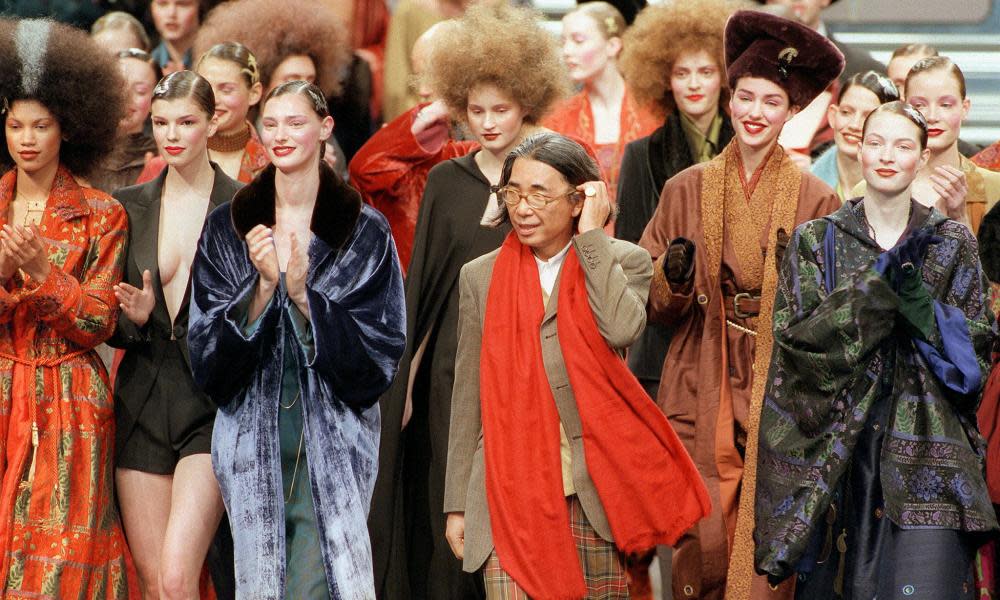Kenzo: widely copied rule-breaker who shook up Paris fashion

Kenzo Takada enriched and expanded what Paris fashion could be. Arriving in the city from Tokyo as a young designer in 1964, he brought with him the tastes and traditions of his native Japan and expanded the horizons of the French fashion world.
One of the first male students to be admitted to Tokyo’s Bunka fashion college in the late 1950s, he pioneered an exuberant and experimental use of volume, print and colour that did not conform to conventions of masculine and feminine clothing.
As a penniless young designer in 1970, Kenzo made his first collection out of the only material he could afford – mixed bolts of cheap fabric, bought in bulk from a market in Montmartre. He mixed the prints together, creating a patchwork of florals, stripes, checks and graphics which was to become his signature. His eclectic, rule-breaking aesthetic struck a chord, and was widely copied. By the middle of the 1970s, his catwalk shows were stadium-sized events, besieged by fans attempting to gain entry, often running three hours late and with a rock music soundtrack. His glamorous clients included Bianca Jagger and Catherine Deneuve.
Kenzo’s move from Tokyo to Paris was the catalyst for a succession of Japanese-owned fashion houses in Paris, which have been hugely influential on fashion in the past half century. Issey Miyake and Kansai Yamamoto arrived in Paris in the wake of his success. The roll call of younger designers who his work has influenced includes Dries Van Noten and Marc Jacobs.
Kenzo sold his brand to LVMH in 1993, and retired in 1999. Since 2019 the brand has been designed by Felipe Oliviera Baptista, who presented his most recent Kenzo collection a few days ago.


